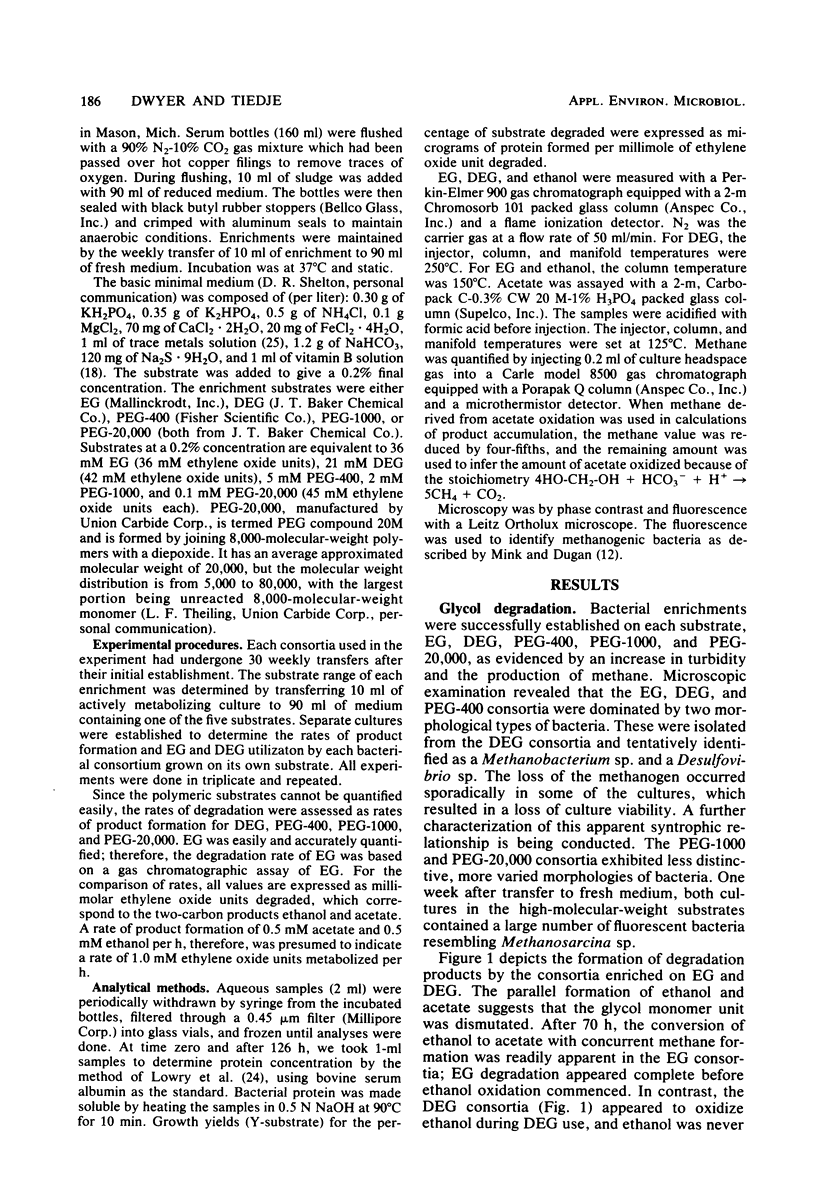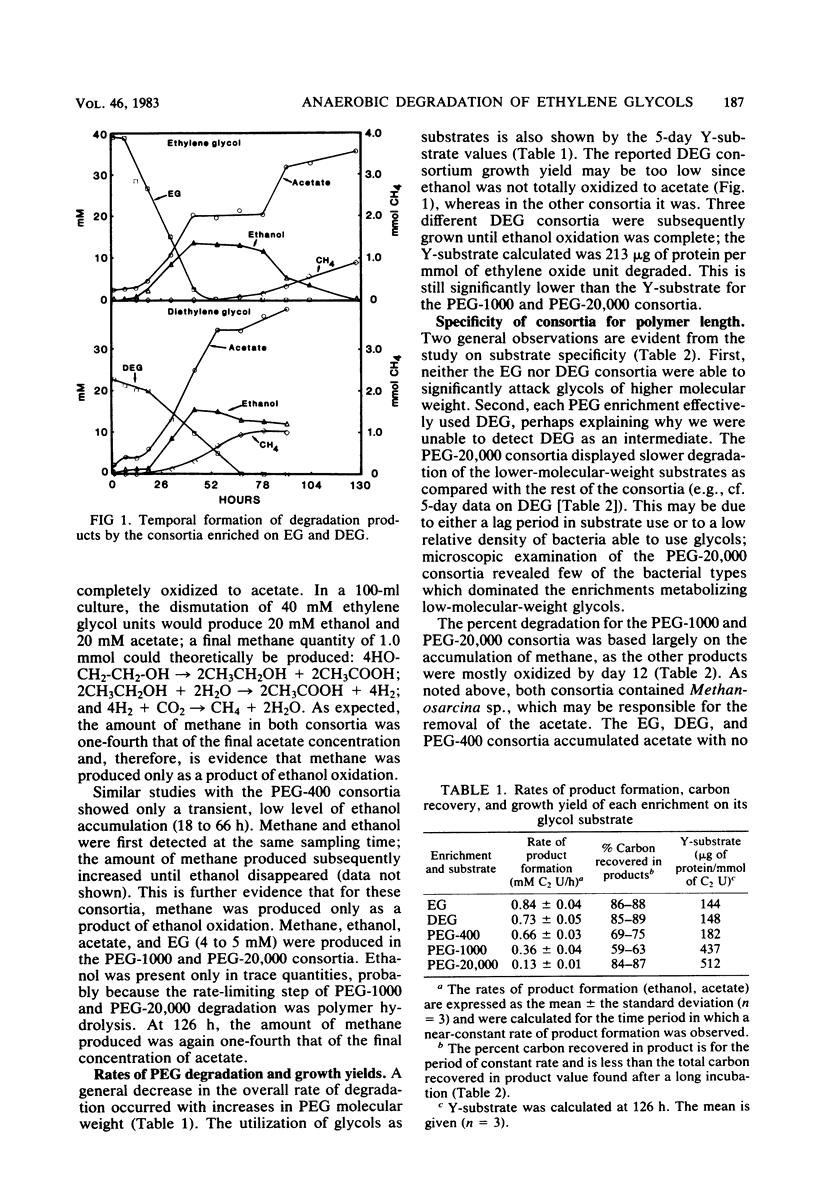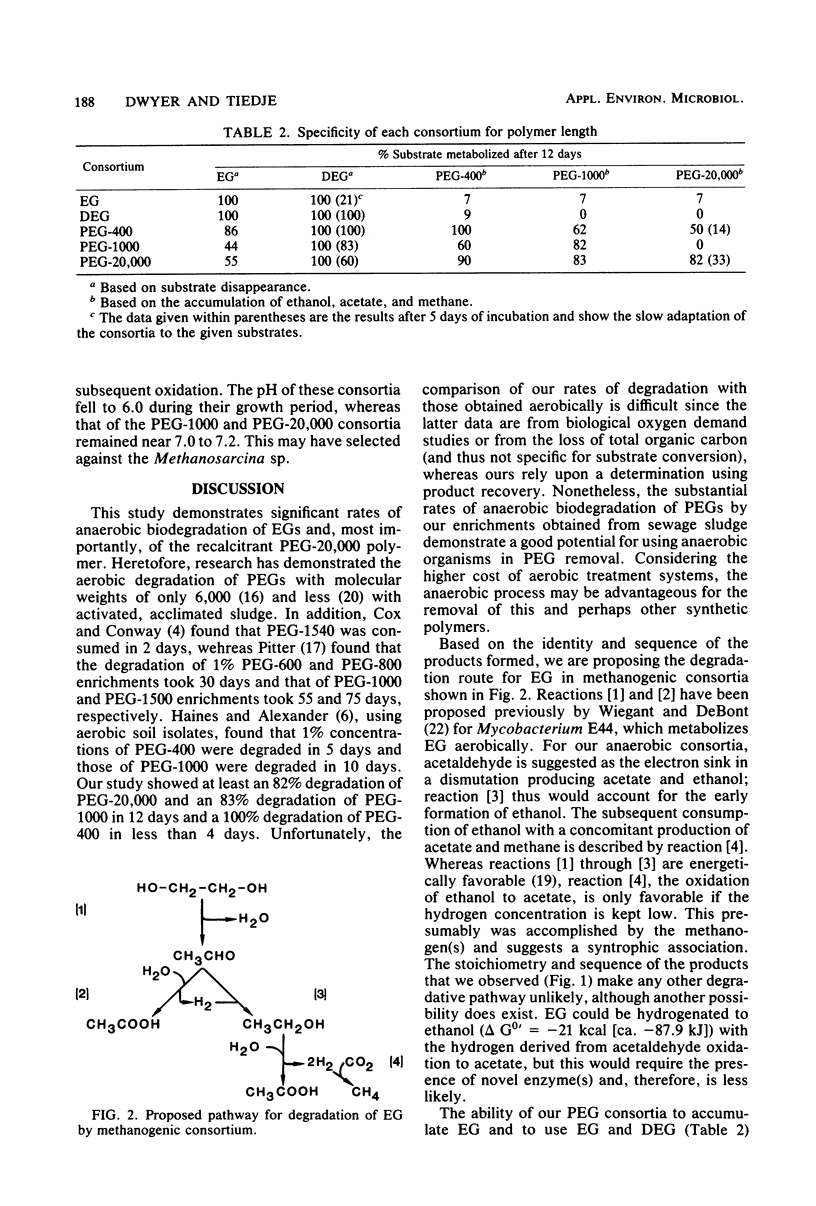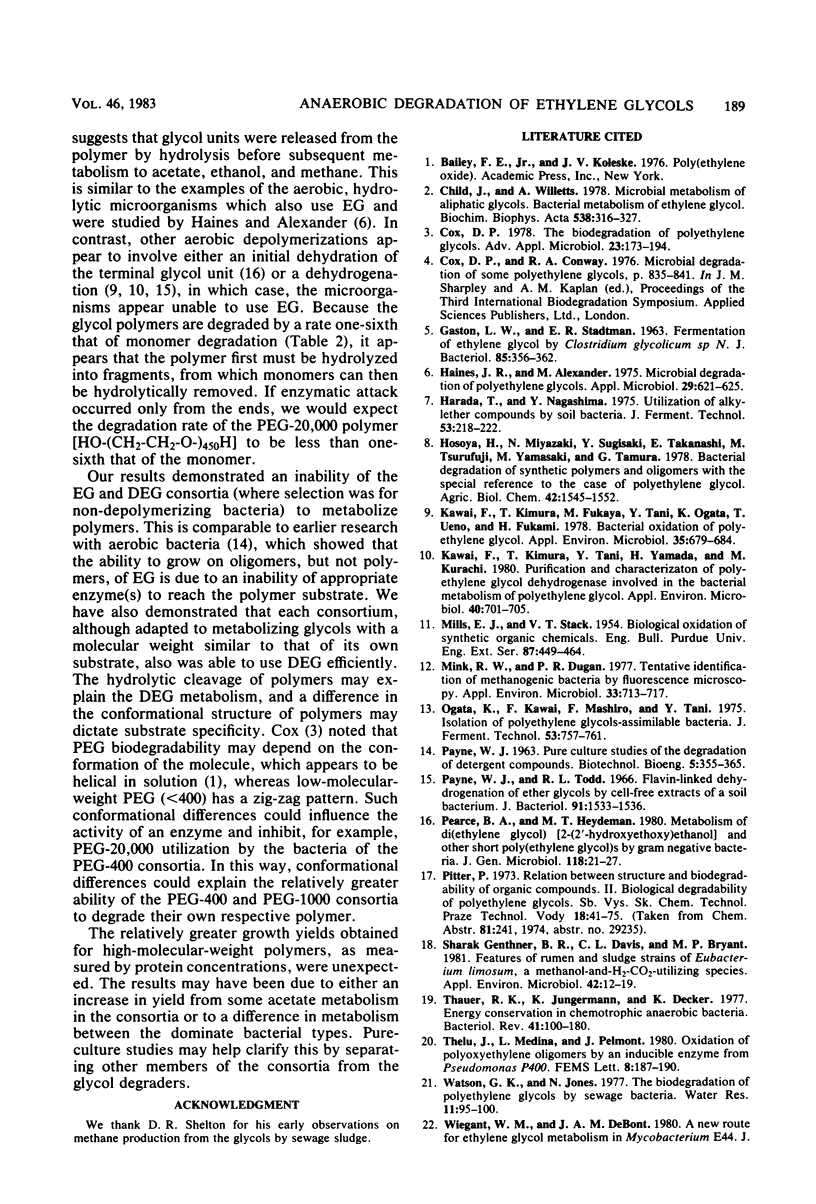Abstract
Methanogenic enrichments capable of degrading polyethylene glycol and ethylene glycol were obtained from sewage sludge. Ethanol, acetate, methane, and (in the case of polyethylene glycols) ethylene glycol were detected as products. The sequence of product formation suggested that the ethylene oxide unit [HO-(CH2-CH2-O-)xH] was dismutated to acetate and ethanol; ethanol was subsequently oxidized to acetate by a syntrophic association that produced methane. The rates of degradation for ethylene, diethylene, and polyethylene glycol with molecular weights of 400, 1,000, and 20,000, respectively, were inversely related to the number of ethylene oxide monomers per molecule and ranged from 0.84 to 0.13 mM ethylene oxide units degraded per h. The enrichments were shown to best metabolize glycols close to the molecular weight of the substrate on which they were enriched. The anaerobic degradation of polyethylene glycol (molecular weight, 20,000) may be important in the light of the general resistance of polyethylene glycols to aerobic degradation.
Full text
PDF





Selected References
These references are in PubMed. This may not be the complete list of references from this article.
- Child J., Willetts A. Microbial metabolism of aliphatic glycols. Bacterial metabolism of ethylene glycol. Biochim Biophys Acta. 1978 Jan 18;538(2):316–327. doi: 10.1016/0304-4165(78)90359-8. [DOI] [PubMed] [Google Scholar]
- Cox D. P. The biodegradation of polyethylene glycols. Adv Appl Microbiol. 1978;23:173–194. doi: 10.1016/s0065-2164(08)70068-6. [DOI] [PubMed] [Google Scholar]
- GASTON L. W., STADTMAN E. R. Fermentation of ethylene glycol by Clostridium glycolicum, sp. n. J Bacteriol. 1963 Feb;85:356–362. doi: 10.1128/jb.85.2.356-362.1963. [DOI] [PMC free article] [PubMed] [Google Scholar]
- Genthner B. R., Davis C. L., Bryant M. P. Features of rumen and sewage sludge strains of Eubacterium limosum, a methanol- and H2-CO2-utilizing species. Appl Environ Microbiol. 1981 Jul;42(1):12–19. doi: 10.1128/aem.42.1.12-19.1981. [DOI] [PMC free article] [PubMed] [Google Scholar]
- Haines J. R., Alexander M. Microbial degradation of polyethylene glycols. Appl Microbiol. 1975 May;29(5):621–625. doi: 10.1128/am.29.5.621-625.1975. [DOI] [PMC free article] [PubMed] [Google Scholar]
- Kawai F., Kimura T., Fukaya M., Tani Y., Ogata K., Ueno T., Fukami H. Bacterial oxidation of polyethylene glycol. Appl Environ Microbiol. 1978 Apr;35(4):679–684. doi: 10.1128/aem.35.4.679-684.1978. [DOI] [PMC free article] [PubMed] [Google Scholar]
- Kawai F., Kimura T., Tani Y., Yamada H., Kurachi M. Purification and characterization of polyethylene glycol dehydrogenase involved in the bacterial metabolism of polyethylene glycol. Appl Environ Microbiol. 1980 Oct;40(4):701–705. doi: 10.1128/aem.40.4.701-705.1980. [DOI] [PMC free article] [PubMed] [Google Scholar]
- Mink R. W., Dugan P. R. Tentative identification of methanogenic bacteria by fluorescence microscopy. Appl Environ Microbiol. 1977 Mar;33(3):713–717. doi: 10.1128/aem.33.3.713-717.1977. [DOI] [PMC free article] [PubMed] [Google Scholar]
- Payne W. J., Todd R. L. Flavin-linked dehydrogenation of ether glycols by cell-free extracts of a soil bacterium. J Bacteriol. 1966 Apr;91(4):1533–1536. doi: 10.1128/jb.91.4.1533-1536.1966. [DOI] [PMC free article] [PubMed] [Google Scholar]
- Thauer R. K., Jungermann K., Decker K. Energy conservation in chemotrophic anaerobic bacteria. Bacteriol Rev. 1977 Mar;41(1):100–180. doi: 10.1128/br.41.1.100-180.1977. [DOI] [PMC free article] [PubMed] [Google Scholar]
- Willetts A. Bacterial metabolism of ethylene glycol. Biochim Biophys Acta. 1981 Oct 12;677(2):194–199. doi: 10.1016/0304-4165(81)90085-4. [DOI] [PubMed] [Google Scholar]


